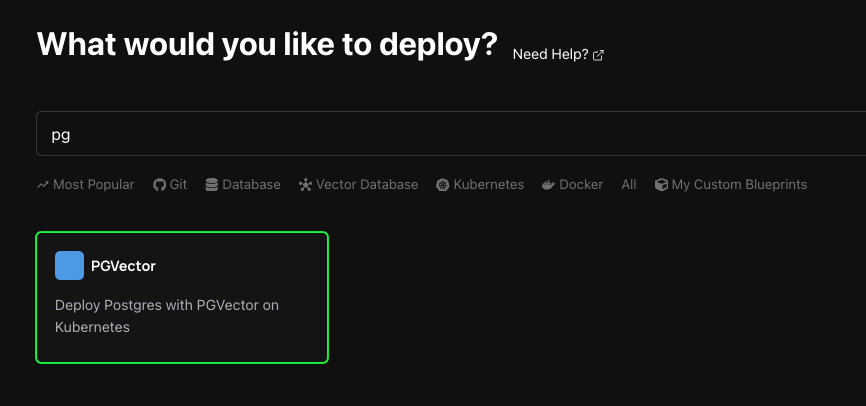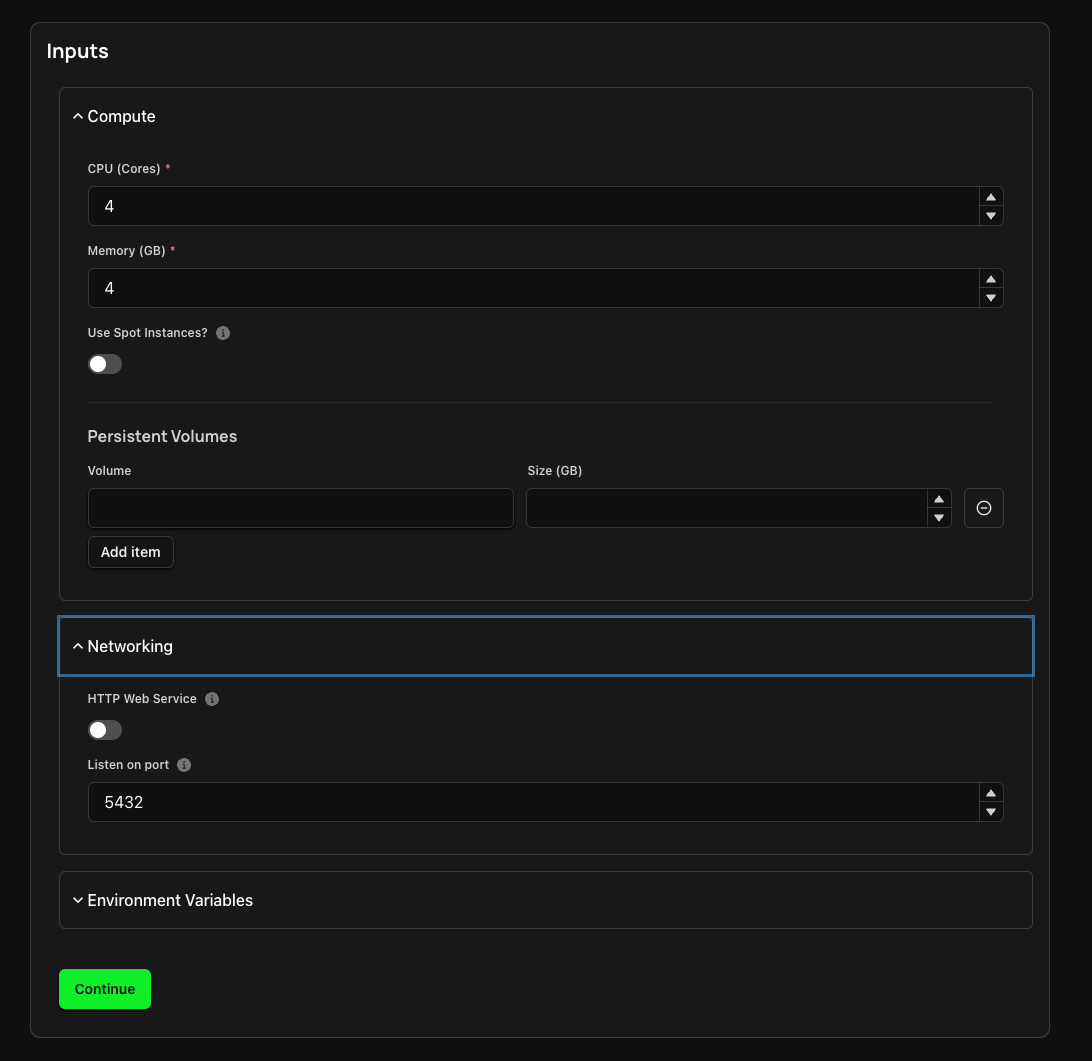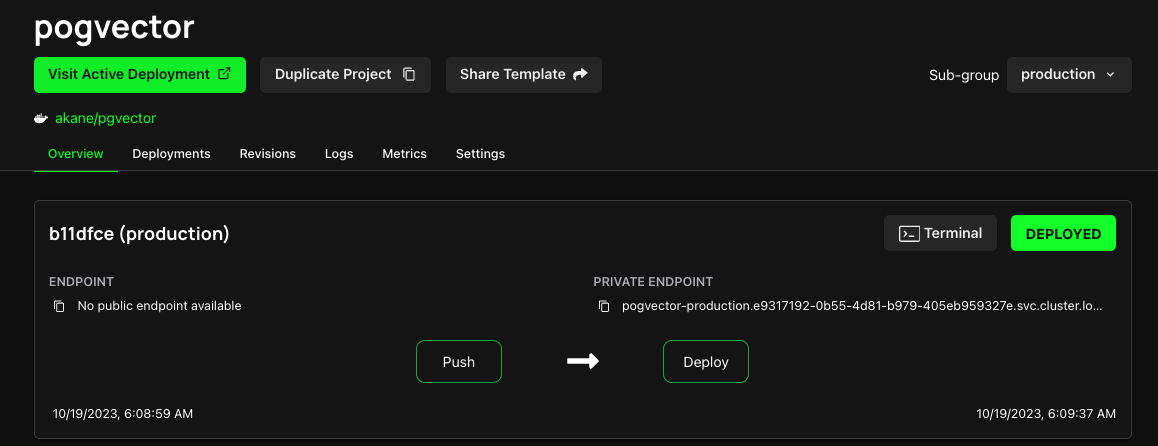PGVector
PGVector is a vector database that leverages PostgreSQL for vector indexing and search capabilities. Zeet's PGVector blueprint simplifies the provisioning of all underlying infrastructure, enabling a self-hosted solution within your own environment.
1. Select PGVector Blueprint
To get started, head over to the Zeet dashboard and navigate to the Create New Database menu. Here, select the PGVector Helm Blueprint.

2. Configure Blueprint for Deployment
1. Select Deploy Target
The first step in configuring your deployment is selecting your Deploy Target. Zeet's PGVector Blueprint utilizes Kubernetes Manifests under the hood to deploy PGVector directly into your Kubernetes cluster. If you don't already have a cluster connected, you can create a new one here.

2. Configure Inputs
PGVector is deployed as a container in your cluster. You can configure the compute resources and environment variables for your deployment here.

Make sure that you have Port 5432 exposed.
3. Finalize and Deploy!
You're almost done! Just give your Project a name and a place to live within your Zeet Dashboard. Pick the Group and Sub-Group, or create new ones and deploy your Project right away, or save it as a draft to deploy it at a later time.

3. Database Connection Information
After you deploy your PGVector instance, you can connect to it using the internal endpoint available in your Project Overview tab. The internal endpoint is only accessible from projects running on the same cluster.
